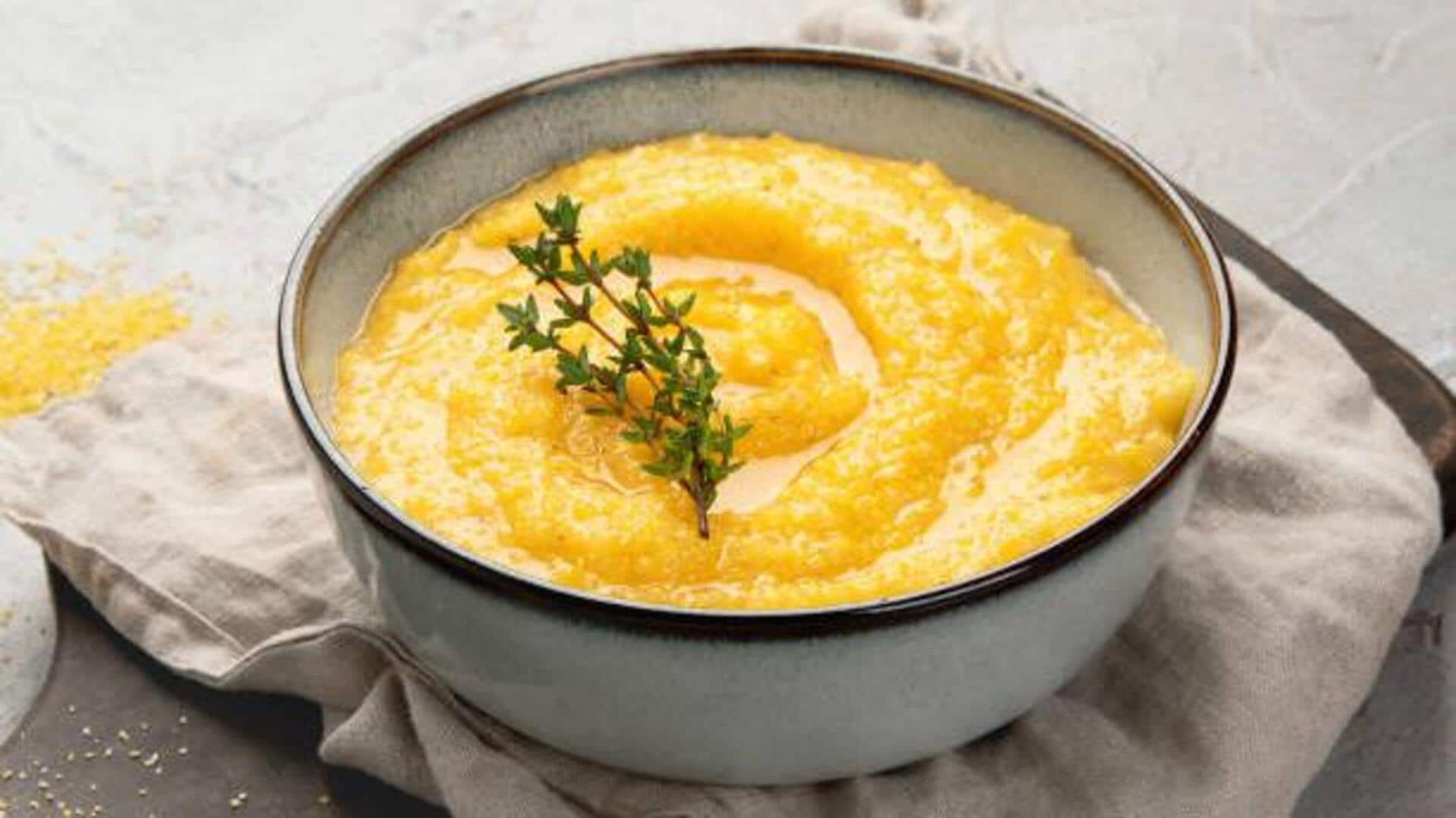
Polenta for breakfast? Here's how to do it right
What's the story
Polenta, a versatile cornmeal dish, can be turned into a delicious breakfast option in just five minutes. Be it sweet or savory flavors, polenta can make a quick and satisfying start to your day. Here are a few ways to enjoy polenta for breakfast, simple yet delicious ideas that cater to your different taste preferences. From creamy textures to crunchy toppings, these suggestions will inspire you to make the most of your morning meal.
Berry delight
Creamy polenta with fresh berries
For a sweet twist on traditional polenta, add fresh berries. Cook the polenta until it reaches a creamy consistency and top it with strawberries, blueberries, or raspberries. The natural sweetness of the berries compliments the mild flavor of the polenta perfectly. A drizzle of honey or maple syrup can enhance this dish further without overpowering its simplicity.
Green boost
Savory polenta with spinach and cheese
A savory option involves adding spinach and cheese into your polenta breakfast. As the polenta cooks, add fresh spinach leaves and stir them until they wilt slightly. Add grated cheese like cheddar or mozzarella for extra flavor and creaminess. Not only does this combination provide essential nutrients, it also makes for a hearty meal that keeps you full longer.
Nutty crunch
Polenta with nuts and dried fruits
For those who love texture, topping your polenta with nuts and dried fruits is a good idea. Almonds or walnuts lend crunch while dried apricots or raisins contribute sweetness (without added sugar). This way, you get variety in flavors and nutrition (healthy fats from nuts and fiber from fruits).
Pancake twist
Quick polenta pancakes with yogurt
Transform cooked polenta into pancakes by shaping small patties and lightly pan-frying them on each side until golden brown. Serve these with some yogurt (for dipping purposes) if you like. These pancakes make for an interesting alternative when compared against regular ones made using flour-based batters. This is mostly because they retain moisture better than most other types do during cooking processes involved here too.